Japan’s First Female Prime Minister: Sanae Takaichi
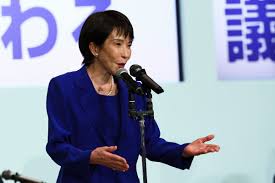
A Historic Moment
On 21 October 2025, Sanae Takaichi was elected by Japan’s parliament as the country’s first female prime minister. Her victory was built on securing a majority in the Lower House (237 votes) and then in the Upper House. She becomes the 104th prime minister of Japan, and the first woman to hold that office.
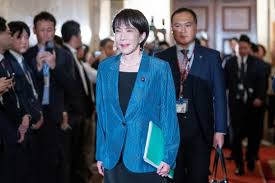
Who Is Sanae Takaichi?
Sanae Takaichi was born 7 March 1961, in Yamatokōriyama, Nara Prefecture. She is a long‐time member of the ruling Liberal Democratic Party (LDP), rising through ministerial roles including Internal Affairs, Economic Security, etc. and well known for her conservative and nationalist views, a protege of the late Shinzo Abe, and an admirer of Britain’s former PM Margaret Thatcher (“Japan’s Iron Lady”).
Politically, Takaichi was first elected to the Japanese parliament's lower house, the House of Representatives, in the 1993 Japanese general election as an independent. The following year she joined the minor "Liberals" party led by Koji Kakizawa, which soon merged into the New Frontier Party. In 1996, Takaichi ran as a sanctioned candidate from the New Frontier Party and was re-elected to the House of Representatives; however, the New Frontier Party lost nationally. On 5 November, she responded to recruitment from the Secretary-General of the LDPKoichi Kato and then joined the LDP. From here, she has held several positions until recently when she emerged the Prime Minister.
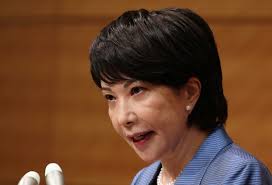
Takaichi was not born into a political background, she was born and raised in the central Japanese prefecture of Nara. Her dad worked for an automotive firm, while her mom worked for the local police department. According to NPR News "Unlike most or many of the politicians in her party who became prime ministers, she came from a rather modest means," Hall says. "But she did study very hard when she was young, and she passed the entrance exams for some very elite private universities in Japan."
Her emergence as the First Female Prime Minister of Japan is symbolically significant for a woman to lead a country like Japan, historically dominated by male leadership in politics and business. Japan ranks low in the Global Gender Gap for political empowerment, but with Takaichi’s appointment, there is hope for change. Many analysts point out that her conservative policy positions may not automatically mean progress for women’s rights, but others have a different viewpoint.
Political & Ideological Shift
Her rise is also part of a broader shift in Japanese politics, the LDP is choosing a leader who leans hard‐right, nationalist, eager to strengthen defence and security, more assertive on foreign policy and willing to revisit Japan’s pacifist post‐war constitution. The election was held on 4 October where Takaichi received 183 votes (31.07%) during the first round, the most of any candidate. Koizumi came in second with 164 votes (27.84%). As no candidate achieved a majority in the first round, a run-off election was held between Takaichi and Koizumi. Takaichi won the runoff by a 54.25% to 45.75% margin, becoming the first woman to hold the post of LDP president. In her first acts as party president, Takaichi appointed Tarō Asō as vice president and Shun'ichi Suzuki as secretary-general of the LDP.
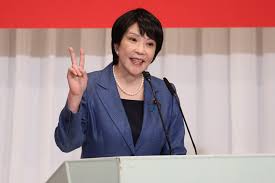
Economically, Japan is facing a sluggish economy, inflation, demographic decline, and heavy public debt. Takaichi has supported “Abenomics”-style policies (named after Shinzo Abe) of fiscal stimulus and structural reform. On the international stage, she takes office at a time of rising regional tension: with China over Taiwan, with South Korea over wartime history, and major ties to maintain with the US. Her first meeting with Donald Trump is considered critical.
What We Know About Her Agenda & Policy Positions
She supports increased defence spending (aiming to raise Japan’s military budget toward 2% of GDP). She opposes same‐sex marriage, supports the traditional family name system (married couples sharing surname), and the male‐only succession for the imperial family. She advocates revising Article 9 of Japan’s constitution, which renounces war, and she has visited the controversial Yasukuni Shrine(symbolic of militarist past) in the past. On economics she is seen as a stimulus advocate—investors initially responded with optimism, but markets are wary of Japan’s debt levels and how she will finance her policies.
The Gender Paradox: Breaking Barriers, but How Much Will Change?
While Takaichi’s appointment is historic for gender representation, many analysts caution that her stances do not align with progressive reforms for women or minorities. For example, She has not prioritized gender equality or women’s empowerment as a flagship agenda. After becoming prime minister, Takaichi formed her cabinet. While she had previously said that her cabinet would have a level of female representation comparable with the governments of the Nordic countries,her final cabinet composition included only two women: Satsuki Katayama as Japan's first female finance minister, and Kimi Onoda as economic security minister. Some younger women in Japan suggest her positions maintain rather than challenge patriarchal norms. Thus the paradox: a “female first” leader, but one whose ideology may not fundamentally transform the system for many women.
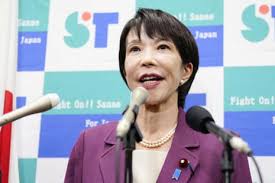
What Lies Ahead: Key Watch‐Points
Stability of Her Government
The LDP lost its traditional coalition partner (Komeito) and now relies on a narrower alliance including the Japan Innovation Party; her majority is fragile.
How she navigates parliamentary approval for budgets and policy reforms will test her leadership.
Economic Impact
Will she deliver on stimulus and growth? Or will the burden of debt and demographic headwinds hamper progress? Markets and economists are watching how she balances bold policy with financial discipline.
Foreign & Security Policy
Relations with China, Korea, Taiwan, and the US will define her foreign policy legacy. Given her nationalistic tone, missteps could inflame regional tensions.
Gender & Social Agenda
Will her premiership translate into meaningful reforms in gender equality, labour, family policy, or will she remain symbolic? The expectations are high; the execution will matter.
Sanae Takaichi’s elevation to Japan’s premiership is indeed a landmark moment: long‐standing barriers have been broken, but history judged leaders not just on “firsts” but on what follows. In her case, the question is: Will this milestone translate into meaningful change, or will it simply be a historic footnote? For Japan, for women in leadership globally, and for politics where representation meets ideology, this moment holds promise, and uncertainty.
“Breaking the glass ceiling is one thing; transforming the room underneath it is another.” Japan looks forward to what this new Prime Minister will promote as her administration progresses.
You may also like...
Super Eagles' Shocking Defeat: Egypt Sinks Nigeria 2-1 in AFCON 2025 Warm-Up

Nigeria's Super Eagles suffered a 2-1 defeat to Egypt in their only preparatory friendly for the 2025 Africa Cup of Nati...
Knicks Reign Supreme! New York Defeats Spurs to Claim Coveted 2025 NBA Cup

The New York Knicks secured the 2025 Emirates NBA Cup title with a 124-113 comeback victory over the San Antonio Spurs i...
Warner Bros. Discovery's Acquisition Saga: Paramount Deal Hits Rocky Shores Amid Rival Bids!

Hollywood's intense studio battle for Warner Bros. Discovery concluded as the WBD board formally rejected Paramount Skyd...
Music World Mourns: Beloved DJ Warras Brutally Murdered in Johannesburg

DJ Warras, also known as Warrick Stock, was fatally shot in Johannesburg's CBD, adding to a concerning string of murders...
Palm Royale Showrunner Dishes on 'Much Darker' Season 2 Death

"Palm Royale" Season 2, Episode 6, introduces a shocking twin twist, with Kristen Wiig playing both Maxine and her long-...
World Cup Fiasco: DR Congo Faces Eligibility Probe, Sparks 'Back Door' Accusations from Nigeria

The NFF has petitioned FIFA over DR Congo's alleged use of ineligible players in the 2026 World Cup playoffs, potentiall...
Trump's Travel Ban Fallout: African Nations Hit Hard by US Restrictions

The Trump administration has significantly expanded its travel restrictions, imposing new partial bans on countries like...
Shocking Oversight: Super-Fit Runner Dies After Heart Attack Symptoms Dismissed as Heartburn

The family of Kristian Hudson, a 'super-fit' 42-year-old marathon runner, is seeking accountability from NHS staff after...




_1762082517.jpg)
